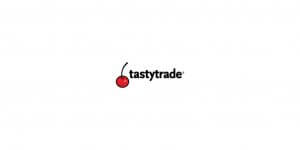Senior corporate advisor bellyaching that traditional financial sector business model no longer works
He is probably right, which is why electronic trading firms have a distinct advantage

Simon Torrance, senior adviser at corporate innovation firm, Rainmaking, claims that the traditional financial services business model is no longer working.
Torrance, who is also an executive member of the World Economic Forum’s working group on accelerating digital transformation, believes that the way financial services companies sell products and services is no longer viable due to increased competition and higher consumer expectations.
“At the moment, financial services organisations ‘manufacture’ products and then try and sell them, either directly to customers or to distributors for resale,” Torrance tells Finextra Research.
“This still accounts for around 90% of business in banking and insurance. What they’ve tried to do is digitise the interfaces, but the business model is fundamentally the same.”
He also believes the plight of such businesses is going to get worse, given that the economic profit forecasts for banks and insurances companies is due to get worse.
“They’re just not making money doing what they’re doing at the moment, and just digitising it isn’t going to work,” he says.
Embedding and integrating
There are numerous alternatives to this model that could prove more profitable and offer greater growth.
Small and medium-sized banks may find themselves too reliant on simple products that are easy to offer at scale such as current accounts and savings. It is however almost impossible to scale up the business and attain profitability when over-reliant on them.
Financial services organisations should be looking to create demand for their products at a low ‘cost to serve.’
“Normally, if a bank or an insurance company does a deal with a retailer or a car company, for example, it is a very convoluted process,” Torrance says.
“They have to go through RFPs (requests for proposal), they can take a long time and they cost a lot of money to integrate.”
An embedded or fully integrated model, however, allows this to happen instantly, as developers within retailers and other companies are able to harness platforms that connect to the bank, insurance company’s products and services.
This allows a bank or insurance company to become more of a platform that offers an array of financial services, resulting in a number of intriguing business models.
One option is for a bank to mix its products with those of other parties, solutions and data to solve problems for customers in a more sophisticated way than any institution can do independently.
Another model is what Torrance refers to as “digital enablement” or “developer support”, whereby banks make their assets available through APIs that third-party can integrate or embed into their own products, such as a payment plan on a car, a holiday or an online experience like an educational course or magazine subscription.
A third option is that of becoming a marketplace and acting as a pure intermediary for the services of different services, akin to what price comparison sites do.
“These all include becoming more of a platform, which is how the big digital companies operate,” Torrance says.
Banks should look then to create platforms where they integrate other companies’ products and services which complement their own, make them available to their customers without having to distribute them in the traditional ways.
Torrance estimates that the share of the financial services industry currently embracing this embedded or integrated model accounts for 8-10% of the market, projecting it to increase to around 40% in 10 years’ time.









